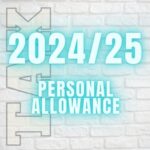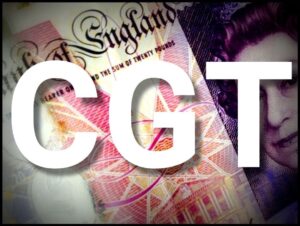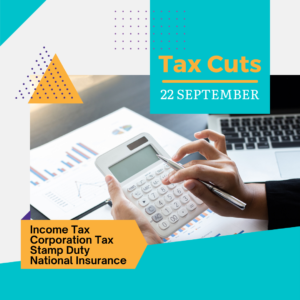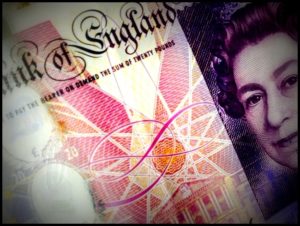 The Chancellor of the Exchequer, Jeremy Hunt, has just announced the details of the autumn statement for 2023 and among the changes was a decrease in National Insurance rates for employed and self-employed people but what is the personal allowance for 2024/25 and has that been increased? Continue reading What is the Personal Allowance for 2024/25?
The Chancellor of the Exchequer, Jeremy Hunt, has just announced the details of the autumn statement for 2023 and among the changes was a decrease in National Insurance rates for employed and self-employed people but what is the personal allowance for 2024/25 and has that been increased? Continue reading What is the Personal Allowance for 2024/25?
Category Archives: Autumn Statement
Capital Gains Tax Changes from 2023
 In the Autumn Statement from the Chancellor of the Exchequer, Jeremy Hunt, today (17th November 2022), it was announced that the capital gains tax (CGT) allowance was being reduced with effect from next year.
In the Autumn Statement from the Chancellor of the Exchequer, Jeremy Hunt, today (17th November 2022), it was announced that the capital gains tax (CGT) allowance was being reduced with effect from next year.
Jeremy Hunt Reverses Tax Changes
 In the current political turmoil there were always going to be more changes coming after the mini budget and the sacking of ex-Chancellor Kwasi Kwarteng last week.
In the current political turmoil there were always going to be more changes coming after the mini budget and the sacking of ex-Chancellor Kwasi Kwarteng last week.
With Jeremy Hunt’s appointment as the new Chancellor it seemed imperative to make some changes that settled the financial markets and these came swiftly after his appointment, instead of on 31st October as previously promised.
The main change that affects the information that this website provides is the reversal of the 1% drop in the lower rate of income tax that was due to come into effect in April next year.
The lower rate was due to drop from 20% to 19% for earnings over the personal allowance of £12,570 and below £50,270, but this has now been scrapped and the lower rate will remain at 20% for the foreseeable future.
The scrapping of the higher rate of 45% had already been almost immediately reversed and so that will also now stay the same as before.
The scrapping of the increase in National Insurance payments does remain however so that is one thing left from the mini budget.
We will be keeping a check on any further announcements to see if more tax changes are in store.
Tax Changes September 2022
 The Chancellor of the Exchequer, Kwasi Kwarteng, announced today (23rd September 2022) that there would be changes to tax rates from April 2023. The September 2022 tax changes were: Continue reading Tax Changes September 2022
The Chancellor of the Exchequer, Kwasi Kwarteng, announced today (23rd September 2022) that there would be changes to tax rates from April 2023. The September 2022 tax changes were: Continue reading Tax Changes September 2022
Class 2 NICs Abolished From 2018

Who Pays Class 2 NICs?
Class 2 National Insurance Contributions are paid by self-employed people whose profits are above the Small Profits Threshold which for 2017/18 is £6,025.
If you earn below that level you are eligible for the small earnings exception (although this was abolished in 2015) which means that you do not have to pay NI but can pay voluntary Class 2 if you wish to.
If you earn above £8,164 then you pay Class 4 NI as well on your profits.
The payment of Class 2 contributions (which are currently set at £2.85 a week) enables those people who pay them access to contributory benefits (class 4 does not).
However, the 2016 Autumn Statement confirmed that Class 2 NICs will be abolished with effect from 2018/19** and the self-employed will then have to pay Class 4 (or voluntary Class 3) NICs. Class 4 NICs will then qualify for contributory benefits.
Complex Rules
The rules around this are quite complex and there will apparently be some transitional help. But in essence, Class 4 contributions will need to be paid by the self-employed on earnings over the Lower Profits Limit.
For 2017/18 the Lower Profits Limit was £8,164 and any profit between that and £45,000 was charged at 9%. Profits over £45,000 are subject to a charge of 2% for Class 4 NICs.
Payment is Dependent on Profits
Once the Class 2 NICs are abolished a new threshold will be introduced called the Small Profits Limit. This will be equivalent to 52 x the Lower Earnings Limit. For 2017/18 this is £6,025.
Anyone whose profits fall between the Small Profits Limit and the Lower Profits limit will not need to pay the Class 4 NI contributions but will be treated as if they have paid them.
As Class 4 NICs will in future give access to contributory benefits, this in turn includes qualifying years for the State Pension.
In Summary
If your earnings are below £6,025 (or the rate declared for 2018/19) then you will not need to pay NICs but can choose to pay the voluntary Class 3 NICs which are £14.80 a week.
If your earnings are between £6,025 and £8,164 (or equivalent 2018/19 levels) you do not have to pay NI but will be credited with paying Class 4 NICs.
If your earnings are above £8,164 (or 2018/19 equivalent) you will pay only Class 4 NICs at the effective rate.
**2018 Update
The abolition of class 2 NICs has been postponed until 2019/20.
Autumn Statement Confirms Increase in Personal Allowance
The Chancellor of the Exchequer, Philip Hammond, today confirmed in his 2016 Autumn Statement that the personal allowance, which currently stands at £11,000 per annum for the tax year 2016/17, will be increased as per the announcements in previous budgets.
The personal allowance is the amount that an individual may earn before they have to start paying tax.
The increases that were previously announced mean that the personal allowance will be £11,500 starting from April 2017 for the tax year 2017/18 and will increase to £12,500 by the end of the current parliament.
 Anyone who earns more than £11,500 currently (but less than £100,000) will benefit from the £500 increase in the personal allowance as follows:
Anyone who earns more than £11,500 currently (but less than £100,000) will benefit from the £500 increase in the personal allowance as follows:
Those who pay tax at the basic rate (currently 20%) will be £100 a year (around £8.33 a month) better off with the increase in the personal allowance.
Those who are subject to 40% tax will see £200 a year (£16.66 a month) more in their pay packets (plus any benefit they may gain from the increase in the 40% tax rate bracket).
There were rumours that the Chancellor may bring in the £12,500 personal allowance quicker than had previously been planned but this did not happen as it was confirmed this would likely be in the 2020s.
Once the personal allowance gets to £12,500 it will be increased in each year in line with inflation, unless any further increases are announced in subsequent budgets.
It was also announced that the Spring Budget will be the last budget at that time of year and that in 2017 the budget will move to being an autumn budget and there will be a subsequent spring statement, thus giving plenty of notice before any changes are introduced in the following April.
Stamp Duty Rates Changed
Today (3rd December 2014), in his Autumn Statement, George Osborne announced an unexpected but welcome change to the rates of Stamp Duty paid on property purchases. Not only were there changes in the rates but on the way the duty is calculated. Continue reading Stamp Duty Rates Changed
Personal Allowance 2015/16
Today (3rd December 2014) the Chancellor of the Exchequer, George Osborne, announced that instead of increasing to £10,500 per year, as had been previously announced, the personal allowance would be increasing to £10,600 with effect from April 2015 for the 2015/16 tax year.
